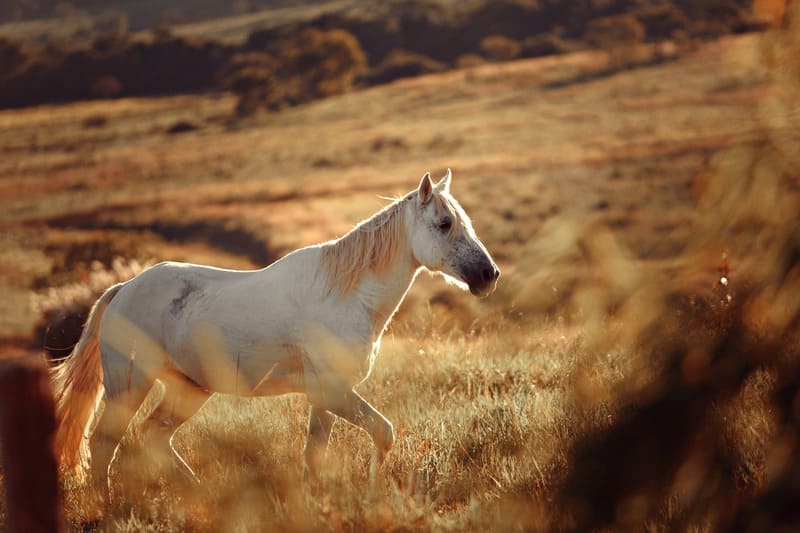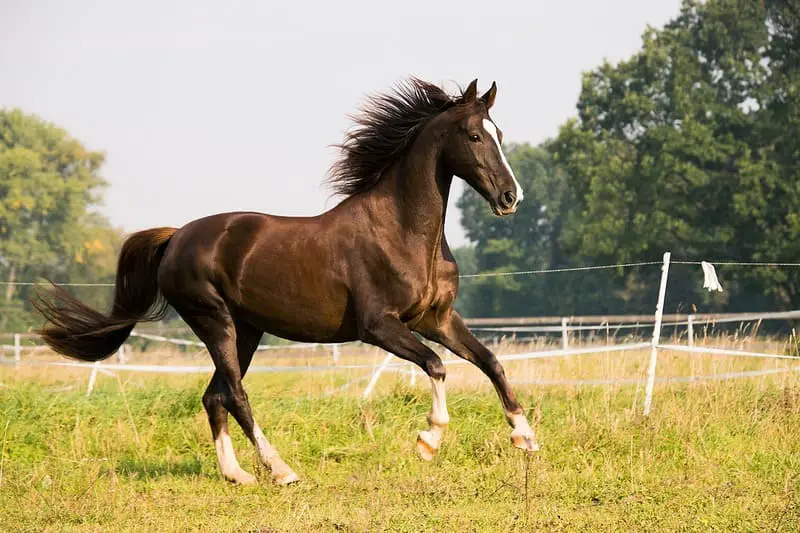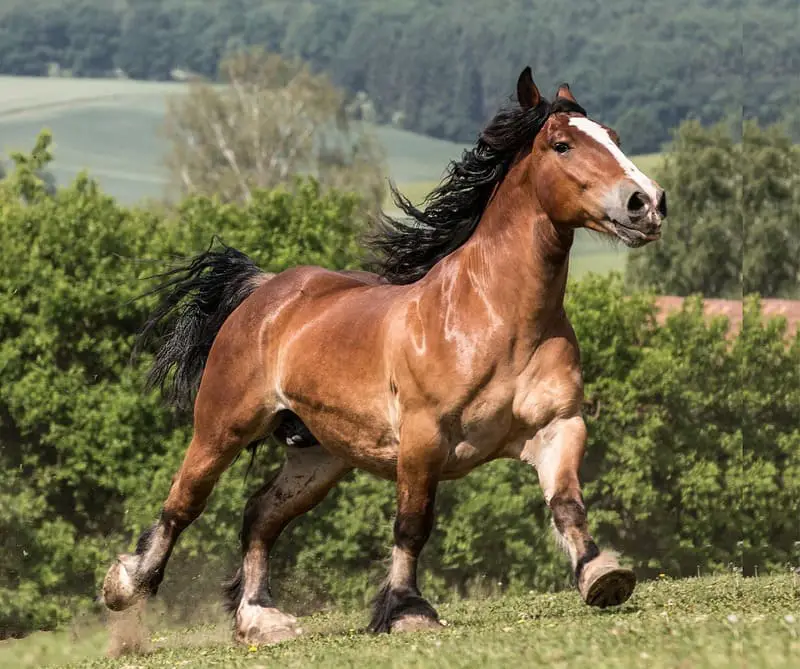Horses have been bred and domesticated for various purposes for thousands of years. Different countries have developed their own breeds, each tailored to the specific needs and preferences of their region and culture. The concept of “the best” horse breed can be subjective and depends on the intended use and desired characteristics. However, there are certain countries known for breeding exceptional horses with distinct qualities. In this extensive exploration, we will delve into the countries renowned for their horse breeding traditions and discuss the notable breeds and their attributes.

The Importance of Horse Breeding
Horse breeding is a practice with a rich history and cultural significance. It involves the selective mating of horses to produce offspring with specific traits, such as size, strength, speed, temperament, and conformation. These traits can be tailored to the intended purpose, whether it’s for agriculture, transportation, racing, sports, or leisure riding.
The significance of horse breeding lies in its role in shaping and preserving various horse breeds that have distinct characteristics. It also contributes to the improvement of horse health, performance, and adaptability to different environments. Countries with strong horse breeding traditions often have breeds that are highly sought after both domestically and internationally.
Factors Influencing Horse Breeding
Several factors influence the success of horse breeding in different countries. These factors contribute to the development and reputation of specific horse breeds. Key factors include:
1. Cultural Heritage
Cultural traditions and historical practices play a significant role in horse breeding. Certain countries have a deep-rooted equestrian culture that has been passed down through generations. These traditions influence the selection of breeding stock and the preservation of unique bloodlines.
2. Geography and Climate
Geography and climate have a direct impact on the physical attributes and adaptability of horse breeds. Horses bred in regions with extreme weather conditions, such as cold winters or hot deserts, may develop specific traits to survive in those environments.
3. Equestrian Sports and Competitions
The popularity of equestrian sports and competitions can drive the breeding of horses with particular skills and characteristics. For example, the demand for fast and agile horses in horse racing has led to the development of specific breeds known for their speed.
4. Economic Factors
Economic factors, such as the demand for horses in various industries, can significantly influence breeding practices. For example, countries with strong agricultural traditions may prioritize workhorses, while countries with a thriving horse racing industry may emphasize speed and agility.
5. Breeding Programs
The presence of organized breeding programs and associations dedicated to preserving and improving specific horse breeds can contribute to the success of horse breeding in a country. These programs often establish breeding standards and ensure the quality of bloodlines.

Countries Known for Breeding Exceptional Horses
Several countries have earned international recognition for breeding exceptional horses, each with its own unique attributes and specialties. Let’s explore some of these countries and the notable horse breeds they have developed.
1. Arabian Horses (Saudi Arabia and Others)
The Arabian horse is one of the most famous and influential horse breeds in the world. It originated in the Arabian Peninsula and is known for its distinctive head shape, high tail carriage, and stamina. Arabian horses have played a crucial role in shaping many other breeds through their influence on horse breeding worldwide. They excel in endurance riding and are renowned for their intelligence and loyalty.
2. Thoroughbred Horses (United Kingdom)
The Thoroughbred is a breed developed in England. It is famous for its speed and agility and is primarily associated with horse racing. Thoroughbreds are known for their elegance, athleticism, and competitive spirit. They have a significant impact on the racing industry globally and are highly sought after for their exceptional performance.
3. Clydesdale Horses (Scotland)
Clydesdale horses originated in Scotland and are one of the best-known draft horse breeds. They are appreciated for their size, strength, and distinctive appearance, characterized by their white markings and feathering on the lower legs. Clydesdales have been used for various agricultural and heavy hauling purposes.
4. Andalusian Horses (Spain)
Andalusian horses, also known as Pure Spanish Horses, are admired for their elegance and versatility. They have a long history in Spain and are known for their graceful movements and strong build. Andalusians have excelled in various equestrian disciplines, including dressage and high school riding.
5. Friesian Horses (Netherlands)
Friesian horses, originating in the Netherlands, are known for their striking black coat, luxurious mane, and tail, and graceful, high-stepping gaits. They are versatile horses used in dressage, driving, and leisure riding. Friesians are characterized by their powerful build and friendly disposition.
6. American Quarter Horses (United States)
The American Quarter Horse is one of the most popular breeds in the United States. Known for its speed over short distances and ability to work cattle, it is a versatile breed used in rodeo events, ranch work, and western riding. American Quarter Horses are appreciated for their muscular build and calm temperament.
7. Percheron Horses (France)
The Percheron is a French breed known for its strength and versatility as a draft horse. These horses are often gray or black and have a robust build, making them suitable for agricultural work, logging, and heavy hauling. Percherons are valued for their gentle nature and reliability.
8. Icelandic Horses (Iceland)
Icelandic horses are a unique and resilient breed that originated in Iceland. They are small in stature but known for their endurance, sure-footedness, and five distinct gaits, including the famous “tölt.” Icelandic horses are used for riding and trekking in challenging terrains and have a strong cultural connection to Iceland.
9. Appaloosa Horses (United States)
Appaloosa horses are known for their striking coat patterns, characterized by spots and speckles. They are versatile horses used in various equestrian disciplines, including western riding and trail riding. Appaloosas are appreciated for their intelligence and adaptability.
10. Hanoverian Horses (Germany)
Hanoverian horses are a warmblood breed that originated in Germany. They are known for their athleticism, particularly in dressage and show jumping. Hanoverians are valued for their elegant appearance, strong hindquarters, and calm temperament.
These are just a few examples of countries known for breeding exceptional horse breeds. Each of these breeds has distinct characteristics and attributes that make them highly regarded in their respective categories, whether it’s for work, sport, or leisure.
Breed Characteristics and Specializations
To further understand why certain countries are renowned for their horse breeding, let’s explore the characteristics and specializations of a few notable horse breeds in greater detail:
1. Arabian Horses
Origin: Arabian Peninsula
Characteristics: Arabian horses are known for their distinctive head shape, arched neck, and high tail carriage. They are typically smaller in size but exhibit tremendous stamina and endurance. Their coat colors vary, and they have a natural elegance and grace.
Specialization: Arabian horses excel in endurance riding and are prized for their ability to cover long distances without tiring. They are also used in various equestrian disciplines, including show jumping, dressage, and western riding.
2. Thoroughbred Horses
Origin: United Kingdom
Characteristics: Thoroughbreds are tall, elegant horses known for their athleticism and speed. They have refined conformation, a deep chest, and powerful hindquarters. Their coat colors are usually solid.
Specialization: Thoroughbreds are primarily associated with horse racing. They are bred for their speed and compete in various racing events, including flat racing, steeplechase, and harness racing.
3. Friesian Horses
Origin: Netherlands
Characteristics: Friesians are recognized for their all-black coat, luxurious mane, and tail. They have a sturdy build with strong bone structure. Their expressive eyes and high-stepping gaits make them stand out.
Specialization: Friesians are versatile horses used in dressage, driving, and leisure riding. Their distinct appearance and friendly disposition appeal to many horse enthusiasts.
4. American Quarter Horses
Origin: United States
Characteristics: American Quarter Horses are medium-sized with a well-muscled, compact body. They have a broad chest, strong hindquarters, and a calm temperament. Coat colors vary widely.
Specialization: American Quarter Horses are known for their versatility. They excel in rodeo events, ranch work, and western riding. Their ability to sprint over short distances, often a quarter-mile, is a distinctive trait.
5. Percheron Horses
Origin: France
Characteristics: Percherons are large draft horses with a solid build. They are typically gray or black, with feathering on their lower legs. Their gentle temperament and expressive eyes make them popular.
Specialization: Percherons are prized as draft horses, ideal for agricultural work, logging, and heavy hauling. Their strength and reliability are valued attributes in these industries.
6. Icelandic Horses
Origin: Iceland
Characteristics: Icelandic horses are small, robust, and well-suited to challenging terrains. They have a thick double coat, a luxurious mane and tail, and are known for their five distinct gaits, including the tölt.
Specialization: Icelandic horses are used for riding and trekking in Iceland’s diverse landscapes. Their ability to navigate difficult terrains and provide a smooth, comfortable ride is highly sought after.
7. Appaloosa Horses
Origin: United States
Characteristics: Appaloosas are known for their distinctive coat patterns, including spots and speckles. They have a range of body types but are generally athletic and versatile. Their intelligence and adaptability make them popular.
Specialization: Appaloosas excel in various equestrian disciplines, from western riding to trail riding. They are appreciated for their versatility and unique coat patterns.
Factors Contributing to Success in Horse Breeding
Successful horse breeding in a country involves several key factors that contribute to the development and recognition of exceptional horse breeds. These factors include:
1. Selective Breeding
Countries with a strong horse breeding tradition prioritize selective breeding practices. This involves choosing breeding stock based on specific traits and characteristics that are desirable for the intended purpose, whether it’s work, sports, or leisure.
2. Preservation of Bloodlines
Preservation of pure bloodlines and adherence to breed standards are crucial for maintaining the integrity of horse breeds. Many countries have established breed associations and registries to oversee breeding practices and maintain breed purity.
3. Education and Expertise
Countries known for successful horse breeding often have a well-established community of breeders, trainers, and equine experts. Education and expertise in areas such as genetics, conformation, and horse care are essential for maintaining breed quality.
4. Equestrian Culture
Countries with a deep-rooted equestrian culture are more likely to invest in horse breeding and prioritize the development of specific breeds. Equestrian events and traditions play a significant role in shaping the country’s horse industry.
5. Market Demand
Market demand for horses with specific skills and characteristics influences breeding practices. Countries that have a strong demand for certain horse breeds are more likely to focus on their breeding and development.
6. Collaboration and Research
Collaboration among breeders, researchers, and equine organizations is essential for advancing horse breeding practices. Research into equine genetics, health, and performance contributes to the success of breeding programs.

Challenges in Horse Breeding
While successful horse breeding is celebrated in many countries, it comes with its set of challenges. Some of the common challenges in horse breeding include:
1. Genetic Diversity
Maintaining genetic diversity within horse breeds is essential to prevent inbreeding and preserve the health and vigor of the breed. Some breeds face the risk of a limited gene pool, which can lead to genetic disorders and reduced adaptability.
2. Market Fluctuations
The demand for specific horse breeds can fluctuate over time. Economic factors and changing preferences in equestrian sports and activities can affect the market for certain breeds.
3. Conservation of Rare Breeds
Rare and indigenous horse breeds are at risk of extinction due to factors like urbanization, agricultural changes, and the decline of traditional practices. Efforts are needed to conserve and protect these breeds.
4. Welfare Concerns
Breeding practices that prioritize specific traits, such as extreme conformation or coat colors, can lead to welfare concerns for the horses involved. Ensuring the well-being of breeding animals is crucial.
5. Disease Management
Disease outbreaks can pose a significant threat to horse breeding programs. Effective disease management and biosecurity measures are essential to protect breeding stock.
Conclusion
Horse breeding is a practice deeply rooted in culture, history, and equestrian traditions. Different countries have earned recognition for their contributions to the equine world through the development of exceptional horse breeds. These breeds exhibit diverse characteristics and are highly specialized for various purposes, from racing and work to leisure riding and cultural events.
The success of horse breeding in a country depends on a combination of factors, including selective breeding, preservation of bloodlines, education, market demand, equestrian culture, and collaboration with researchers and experts. While there are challenges in the field, such as maintaining genetic diversity and conserving rare breeds, the global horse industry continues to evolve and adapt.
Ultimately, the question of which country breeds the “best” horses is subjective, as it depends on individual preferences and intended uses. Each country’s horse breeds offer unique qualities and attributes, contributing to the rich tapestry of the global equine community. Whether you seek speed, strength, elegance, or versatility, there is a horse breed from around the world that can fulfill your equestrian aspirations and needs.